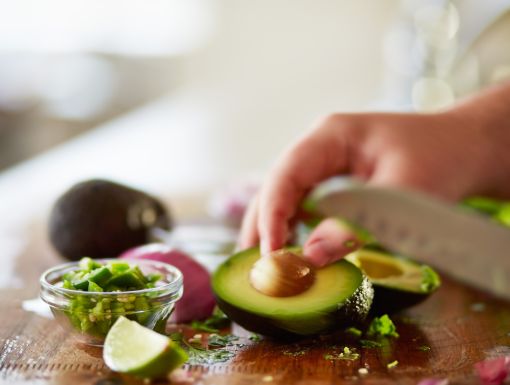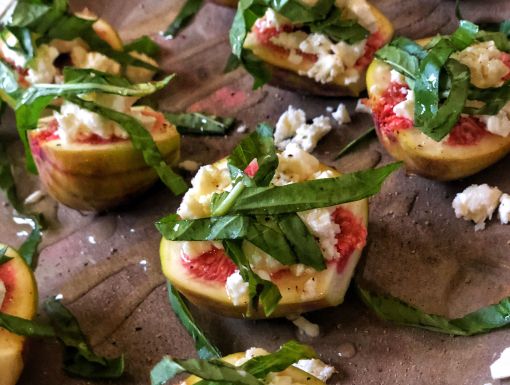
How to Cut a Mango: A Step-By-Step Guide
Delicious grilled, paired with fish or in smoothies, mangos are a tasty and nutritious fruit. But they can be a slippery challenge to cut. With this step-by-step guide, you’ll have no problem cutting into a mango safely and efficiently; you might even get some ideas on different ways to incorporate more of the fruit into your diet.
How to safely cut a mango
1. Pick your mango
Start by selecting a ripe, but still firm mango. The flesh of the mango itself should be soft and bright orange-yellow. If the fruit is too ripe, it will be mushy and thus difficult to cut into chunks.
2. Cut away sides from pit
The mango has a long, flat seed in the center of it. Your objective is to cut along the sides of the pit, separating it from the flesh.
Holding the mango with your non-dominant hand, stand it on its end, stem side up. By positioning the mango this way, you can better imagine the alignment of the pit inside of it. With a sharp knife in your dominant hand, cut from the top of the mango, slicing off one side of the fruit. Leave a little room to fully avoid the pit.
Repeat with the other side. You should end up with three pieces: two halves and a middle section that includes the pit.
3. Make crosswise cuts in the flesh
This step may be familiar if you’ve ever cubed an avocado.
Take a mango half and use a paring knife to make lengthwise and crosswise cuts in it, creating a grid of sorts. Avoid cutting through the peel. Then press the underside of the half so that the inside of the fruit is inverted, pushed out into individual cubes like a hedgehog.
4. Scoop or peel segments away
Use a spoon to scoop or your fingers to peel the segments of fruit from the skin.
5. Cut away pit
You certainly don’t want to let the remaining fruit around the pit go to waste. So, take the mango piece with the pit and lay it flat on the cutting board. Using a paring knife, carefully slice or dice the scraps. Enjoy!
Tip: Avoid eating the skin of a mango, as it contains a compound called urushiol, which is also found in poison ivy and can cause allergic responses in some people. If you have a skin sensitivity, you can peel the mango while stabilizing it with gloves or a towel to avoid direct contact.
What are the health benefits of mangos?
Traditionally grown and consumed in India, the sweet and mildly tart mango is today popular throughout the world. In addition to being a delicious treat, these fruits offer some impressive health benefits.
Want healthy recipes and fitness tips delivered to your inbox every week? Sign up for our free newsletter.
The vitamins, minerals and antioxidants in mangos can provide important health benefits:
- The vitamin K in mangos helps your blood clot effectively, prevents anemia and plays a key role in strengthening your bones.
- Mangos are rich in vitamin C, which is essential for the production of healthy collagen, helping you heal and promoting a strong immune system.
- The nutrients in mangos are linked to a host of health benefits including heart health and digestive health and may potentially reduce our risk of certain types of cancer.
How to get more mango in your diet
This tasty fruit can be eaten raw, grilled or frozen as a sweet treat. Here are some other ways you can enjoy it.
- Add it to smoothies
- Grill it during a barbecue
- Use it to jazz up salads
- Make mango chutney or salsa
- Pair it with fish
- Use it as an ingredient in jam
- Make mango sorbet sweetened with a plant-based, zero-calorie sweetener
- Freeze mango cubes and add them to sparkling water or zero-proof cocktails
Looking for mango-inspired recipes? Check these out:



